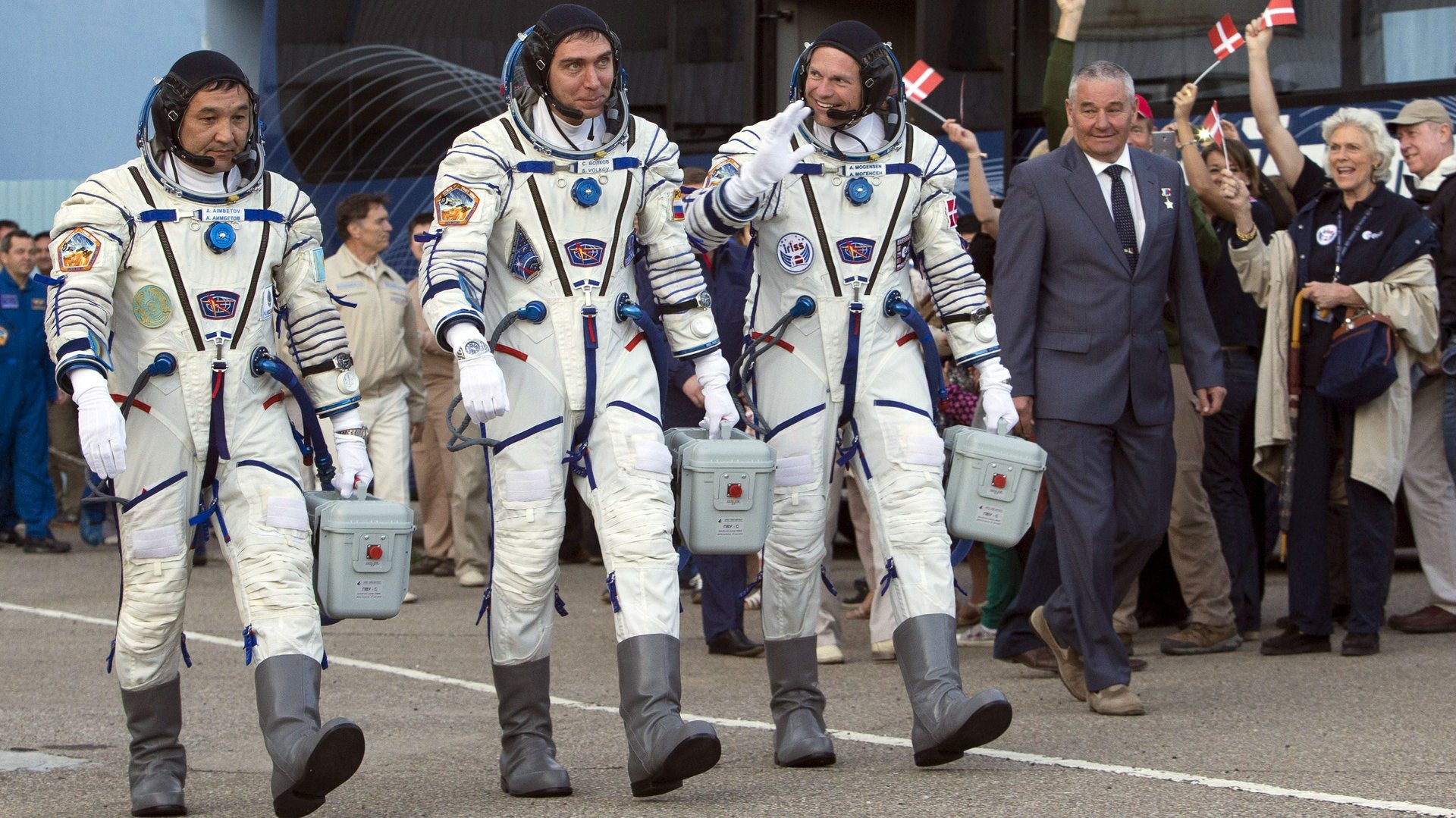Astronauts develop worse vision after long trips in space, and scientists think they know why
Since humans started traveling into space in the 1960s, physiologists have had one big question on their minds: What happens to the human body without gravity?


Since humans started traveling into space in the 1960s, physiologists have had one big question on their minds: What happens to the human body without gravity?
Our bodies have evolved with gravity as a constant presence. When that physical force is taken away, the body doesn’t immediately know how to adapt. Gravity puts pressure on our bones and muscles, which keeps them sturdy enough to support our weight. While up in space, astronauts lose some bone density and muscle mass if they’re not careful to exercise regularly, using things like harnesses on treadmills that mimic the earth’s gravitational pull.
Gravity also affects how the fluids in our bodies flow. On Earth, our bodies’ liquids, like blood and urine, flow toward the ground (except for when our heart and blood vessels are forcing them in the opposite direction). But in space, these fluids have no direction—which is makes it challenging to use the bathroom, and is also detrimental to long-term health.
Researchers from the University of Miami Medical center believe that this change in fluid dynamics may permanently worsen astronauts’ vision over time. They found that astronauts who spend a long time in space (typically defined as more than four months) tend to have buildup of cerebrospinal fluid (CSF) in their heads because there’s no gravity to pull it down. This extra fluid, they believe, may permanently change the shape of astronauts’ eyeballs and irritate their optic nerves. Their work was presented on Nov. 28 at the annual meeting of the Radiological Society of North America.
Our brains don’t sit directly on our skulls; instead, the CSF that surrounds it acts like a waterbed mattress to carefully cushion it. The amount of fluid in our spines and around our brains and eyes fluctuates a little bit every day as we get up or lay down. “On Earth, the CSF system is built to accommodate these pressure changes, but in space the system is confused by the lack of the posture-related pressure changes,” Noam Alperin, a radiologist and biomedical engineer at the University of Miami and lead author of the paper, said in a statement.
Alperin and his team compared brain and eye scans of seven long-duration astronauts and nine short-term astronauts before and after trips to the International Space Station. They found that in all cases, astronauts who stayed in space longer had slightly flatter eyeballs and more irritated optic nerves. These changes in shape are responsible for becoming more far-sighted (not being able to see as well up close) and blurred vision, respectively. The team also found that astronauts who stayed in space for longer had higher concentrations of CSF around the area that holds their eyeballs. Their brains, however, all appeared similar before and after their travel, ruling out any neurological change that could explain these differences in vision.
So far, their work has yet to be published in a peer-reviewed journal; only the abstract is available (pdf). And the team isn’t sure how CSF in the part of the skull that holds the eye changes the eyeball, and whether or not this shape-shifting can be reversed. However, Alperin says that NASA researchers are trying to recreate the weightlessness scenarios with different CSF dynamics to learn more about the relationship of this fluid to vision.